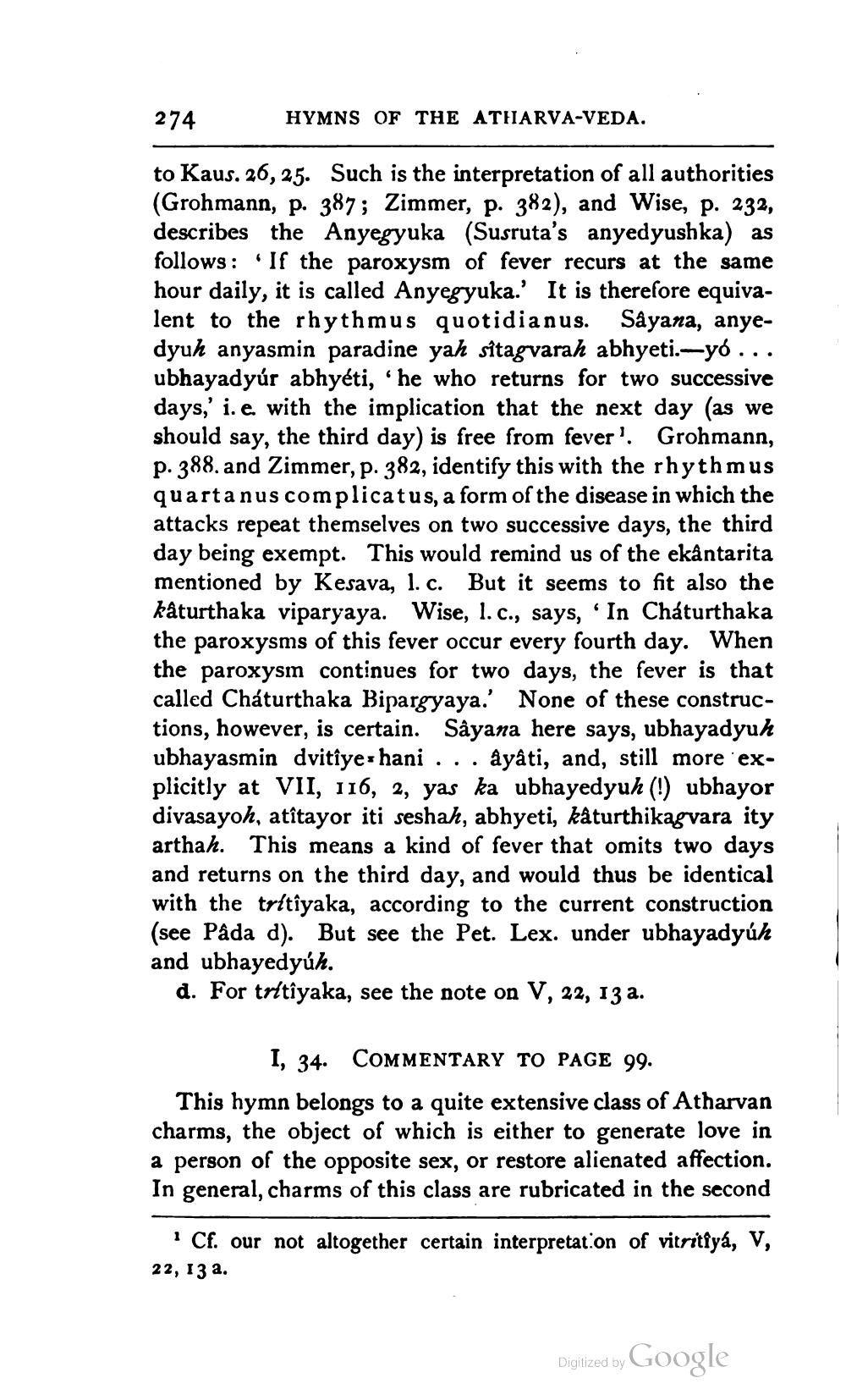________________
274
HYMNS OF THE ATHARVA-VEDA.
to Kaus. 26,25. Such is the interpretation of all authorities (Grohmann, p. 387; Zimmer, p. 382), and Wise, p. 232, describes the Anyegyuka (Susruta's anyedyushka) as follows: If the paroxysm of fever recurs at the same hour daily, it is called Anyegyuka.' It is therefore equivalent to the rhythmus quotidianus. Sayana, anyedyuh anyasmin paradine yah sîtagvarah abhyeti.-yó... ubhayadyúr abhyéti, 'he who returns for two successive days,' i.e with the implication that the next day (as we should say, the third day) is free from fever'. Grohmann, p. 388. and Zimmer, p. 382, identify this with the rhythmus quarta nus complicatus, a form of the disease in which the attacks repeat themselves on two successive days, the third day being exempt. This would remind us of the ekåntarita mentioned by Kesava, 1. c. But it seems to fit also the kâturthaka viparyaya. Wise, I. c., says, ' In Chaturthaka the paroxysms of this fever occur every fourth day. When the paroxysm continues for two days, the fever is that called Chaturthaka Bipargyaya.' None of these constructions, however, is certain. Såyana here says, ubhayadyuh ubhayasmin dvitîyes hani ... âyâti, and, still more explicitly at VII, 116, 2, yas ka ubhayedyuh (!) ubhayor divasayoh, atîtayor iti seshah, abhyeti, katurthikagvara ity arthah. This means a kind of fever that omits two days and returns on the third day, and would thus be identical with the tritiyaka, according to the current construction (see Pâda d). But see the Pet. Lex. under ubhayadyúh and ubhayedyúh.
d. For trltîyaka, see the note on V, 22, 13 a.
I, 34. COMMENTARY TO PAGE 99. This hymn belongs to a quite extensive class of Atharvan charms, the object of which is either to generate love in a person of the opposite sex, or restore alienated affection. In general, charms of this class are rubricated in the second
Cf. our not altogether certain interpretation of vitritfya, V, 22, 13 a.
Digized by Google




